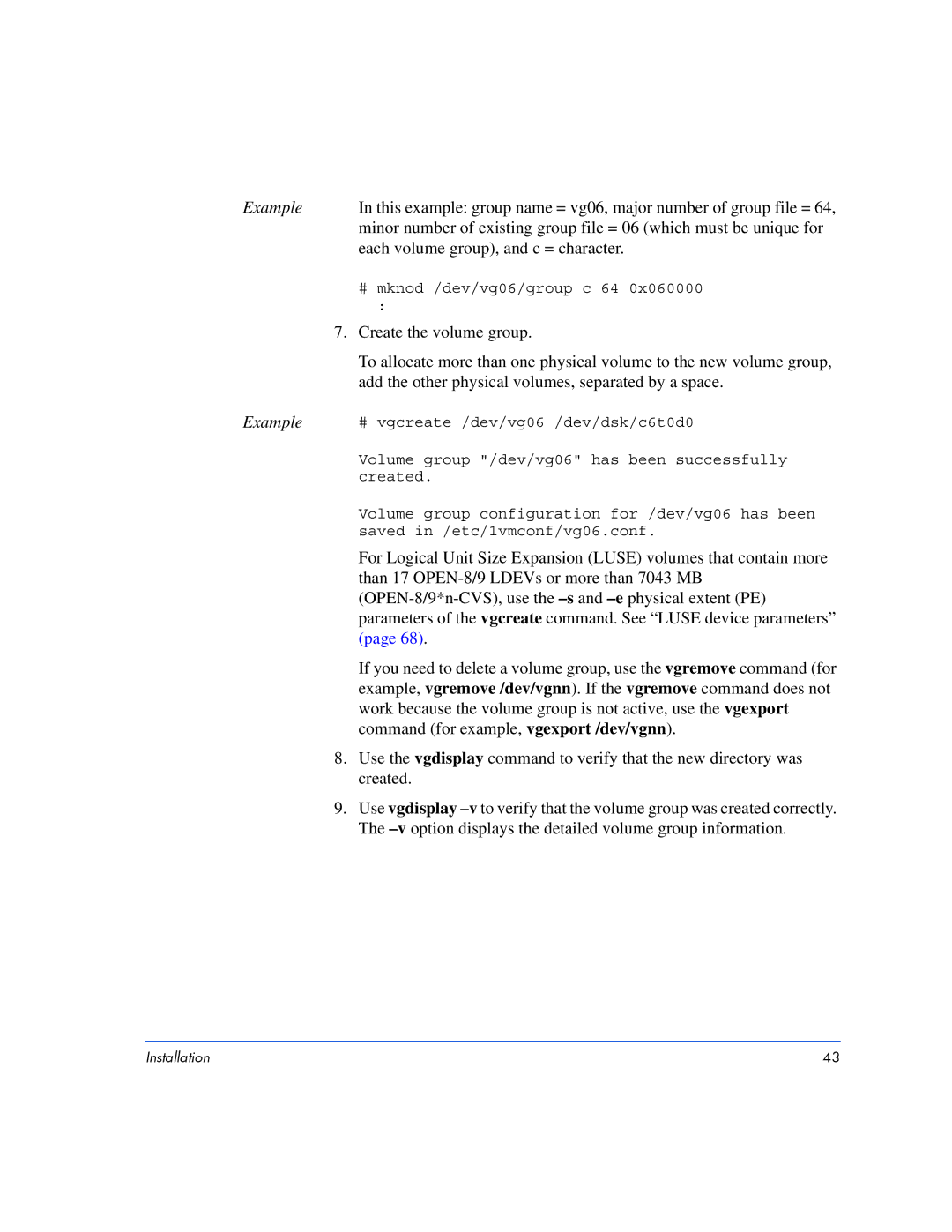Example | In this example: group name = vg06, major number of group file = 64, |
| minor number of existing group file = 06 (which must be unique for |
| each volume group), and c = character. |
#mknod /dev/vg06/group c 64 0x060000
:
7.Create the volume group.
To allocate more than one physical volume to the new volume group, add the other physical volumes, separated by a space.
Example # vgcreate /dev/vg06 /dev/dsk/c6t0d0
Volume group "/dev/vg06" has been successfully created.
Volume group configuration for /dev/vg06 has been saved in /etc/1vmconf/vg06.conf.
For Logical Unit Size Expansion (LUSE) volumes that contain more than 17
If you need to delete a volume group, use the vgremove command (for example, vgremove /dev/vgnn). If the vgremove command does not work because the volume group is not active, use the vgexport command (for example, vgexport /dev/vgnn).
8.Use the vgdisplay command to verify that the new directory was created.
9.Use vgdisplay
Installation | 43 |
